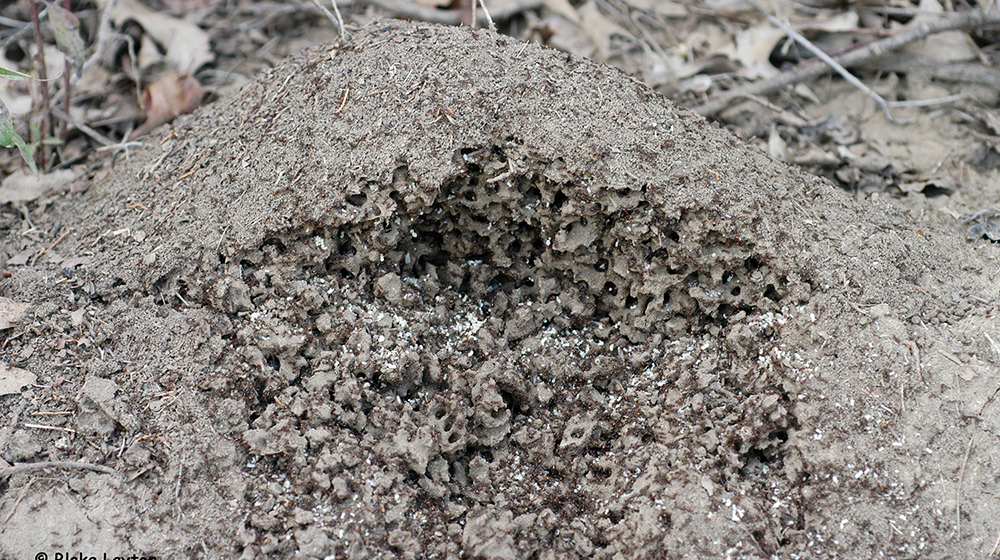Red Imported Fire Ants, Vol. 2, No. 5

Solenopsis invicta
Order: Hymenoptera
Family: Formicidae
That’s a lot of potential stings! A large fire ant mound can contain more than 200,000 workers, and each one is capable of stinging multiple times because fire ants don’t have barbs on their stingers like honey bees. These non-native insects thrive in lawns, pastures, roadsides, and similar unforested habitats throughout the state. In areas where fire ants are not controlled, densities reach 50 to 200 mounds per acre. Fortunately, there are several good methods for controlling fire ants, but it takes an ongoing, preventive program to keep these pests under control.
Control: One of the best ways to control fire ants is to apply a granular fire ant bait to your lawn three or four times per year: spring, summer, and fall. Don’t put these granular baits on top of the fire ant mounds; spread them over the entire yard. The worker ants will gather the granules, take them back to the mound, and feed them to their young. Fire ant baits contain active ingredients such as hydramethylnon, methoprene, indoxacarb, or abamectin. These baits work slowly but give long-lasting control. Don’t apply too much; the rate is only one to 1.5 pounds per acre for most fire ant baits. Baits alone will not keep your lawn totally free of mounds, but they will give around 80 to 90% control when used correctly.
What can you do for that 10 to 20% of mounds that survive the bait treatments? This is the place to use a treatment that you apply directly to the mound. Keep a can of one of the dry fire ant mound treatments on hand to spot treat active mounds as soon as you notice them. Mound treatments that contain acephate smell bad, but work fast, killing most mounds in just a few days. Treatments containing cyfluthrin or deltamethrin don’t smell as bad but take longer to work. Liquid mound drench treatments (discussed in the following references), work fastest of all, but liquid drenches are messy and time-consuming to apply. Still, when you have a mound that needs to be eliminated immediately, they are well worth the time and effort.
See Extension Publication 2429, Control Fire Ants in Your Yard for more information on fire ant biology and control.
Also see the Fire Ant Section for detailed information on fire ant biology and information on controlling fire ants in special situations, like pastures, orchards, or vegetable gardens. See a list of interesting facts about fire ants.
Let others know about the Bug’s Eye View Newsletter: If you know someone who might enjoy receiving the Bug’s Eye View Newsletter, please share. They can easily subscribe by clicking on the sign up link shown below.
Blake Layton, Extension Entomology Specialist, Mississippi State University Extension Service.
The information given here is for educational purposes only. Always read and follow current label directions. Specific commercial products are mentioned as examples only and reference to specific products or trade names is made with the understanding that no discrimination is intended to other products that may also be suitable and appropriately labeled.

